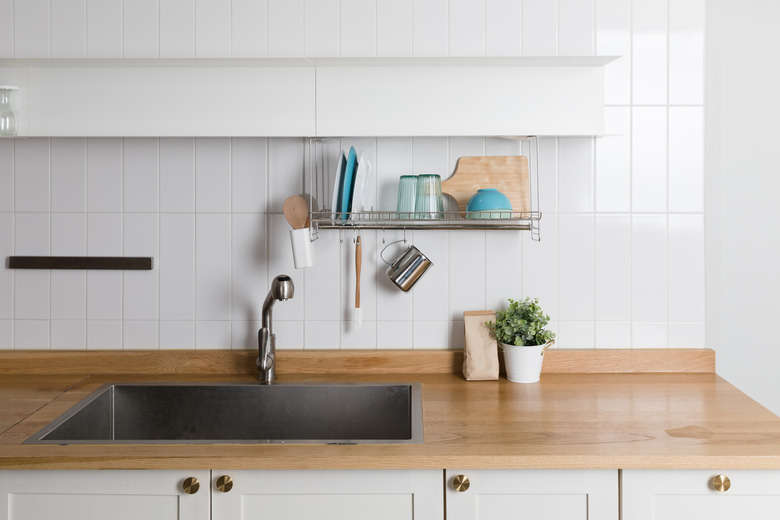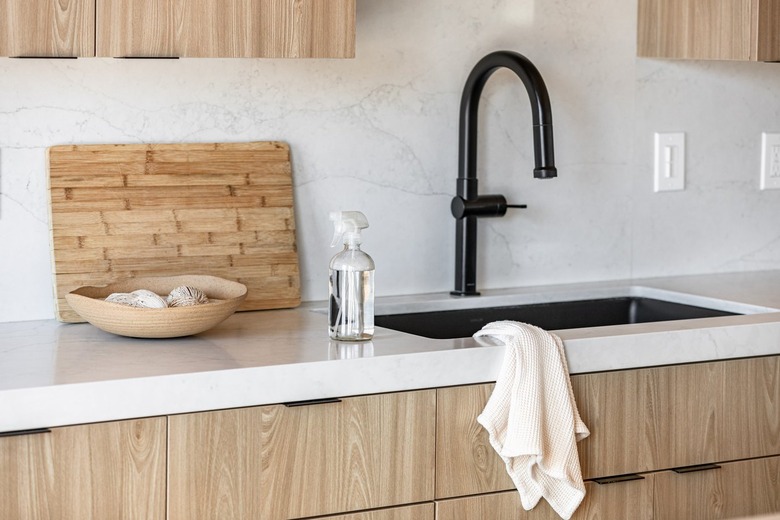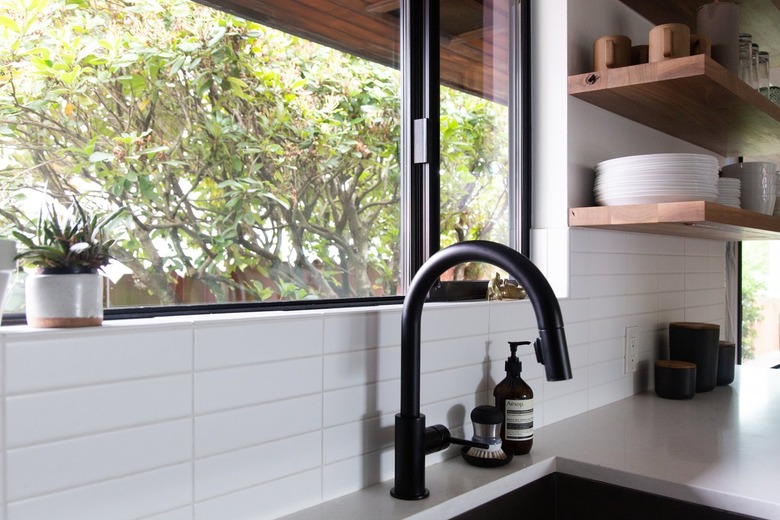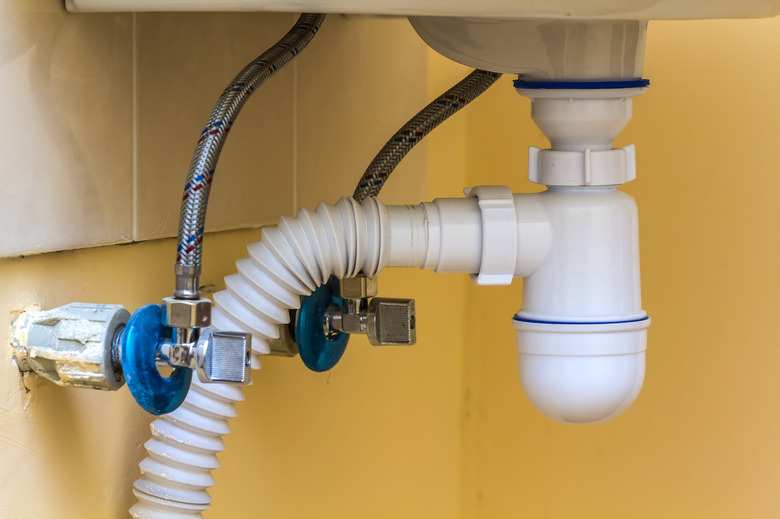The Ultimate Guide To The Parts Of The Kitchen Sink
We may receive a commission on purchases made from links.
When assembling or repairing a kitchen sink, you'll come across some terms that aren't self-explanatory, like "escutcheon." Before you get too frustrated, pause to learn about the various parts of a kitchen sink, from the faucet all the way down to the drain and supply lines.
Here's what you need to know about parts of a kitchen sink — broken down by above-the-counter, faucet, and under-the-counter pieces.
1. Above-Counter Parts of a Kitchen Sink
1. Above-Counter Parts of a Kitchen Sink
The Basin
The proper name for the bowl of the sink is the basin. If there's a wall separating two basins, it's called a double-basin sink. Basins can come in a wide variety of shapes and sizes, and sinks are also categorized by their installation method, with undermount or drop-in being two popular options. If the sink has a flat extension that spreads across the counter and features a group of ridges, this option is called a drainboard.
Drain Holes and Strainers
Each basin will have a drain hole. You can purchase a separate sink strainer to help prevent large kitchen scraps from getting clogged in the drain. The strainer looks like a sieve and sits in the drain hole unless you need to replace it with the drain stopper, which allows you to fill the basin with water for handwashing. Some strainers have built-in stoppers.
2. Parts of a Kitchen Faucet
2. Parts of a Kitchen Faucet
Handle and Spout
Regardless of design, every kitchen faucet has a spout and handle(s). An aerator sits at the tip of the spout and increases the water's volume and pressure, allowing less water to be used for washing and rinsing. Inside the spout is also a check valve, which prevents water from flowing back into the clean water supply line after having been potentially contaminated with outside air.
Many modern kitchens also have a spray head at the end of the spout, which can be pulled out to easily spray down dishes or the sink itself, and which may have a button or other mechanism for changing the water's spray pattern.
Cartridge or Valve
Underneath the handle is a series of metal nuts holding a cartridge, also called a valve, in place. This cartridge opens or closes when the handle is turned to allow fresh water to dispense from the spout.
Escutcheon
The optional long piece of metal that extends from either side of the faucet base is called an escutcheon, and it covers holes in your counter that aren't being occupied by other handles or features, such as a separate spray head, soap dispenser or air gap.
Air Gap
The air gap is a metal cap about 1 1/2 inches tall and features two mesh-covered windows. It is only included when a sink and a dishwasher use the same drain pipe, and it prevents dirty water and odors from going backward from the dishwasher to the sink.
3. Below-Counter Parts of Kitchen Sink
3. Below-Counter Parts of Kitchen Sink
Garbage Disposal
If you have a garbage disposal, this will sit directly underneath the sink's drain hole, and all wastewater will pass through it before exiting out the drain pipe, which is a white PVC pipe.
Drain Pipe
The drain pipe transports wastewater out to the sewer or septic tank, and it always has a curve in it called a trap. This "P trap" holds a small amount of water to prevent odors from rising from the drain. The drain pipe may have an extension that leads to the dishwasher so that the dishwasher's wastewater can drain out the same way.
Water Shutoff Valves
In terms of fresh water supply, you'll see that there are two shutoff valves under the sink: one for hot water and one for cold water. Each one is connected to its designated handle via a flexible hose called a water supply line. If the faucet only has one handle, both supply lines attach to the same cartridge within that handle.



